Achieving Harmony: Designing Meditation Zones
Today’s chosen theme is Achieving Harmony: Designing Meditation Zones. Step into a calm, thoughtful guide to shaping a space that invites stillness, supports your practice, and feels deeply personal. Follow along, share your reflections, and subscribe for weekly inspiration to keep your sanctuary evolving with you.
Begin with Intention: The Heart of Your Meditation Zone
A clear intention acts like a quiet compass, guiding color, layout, and rituals. When you know why you meditate—clarity, compassion, focus—your environment naturally supports that purpose. Tell us your core intention and we’ll help translate it into tangible design choices.
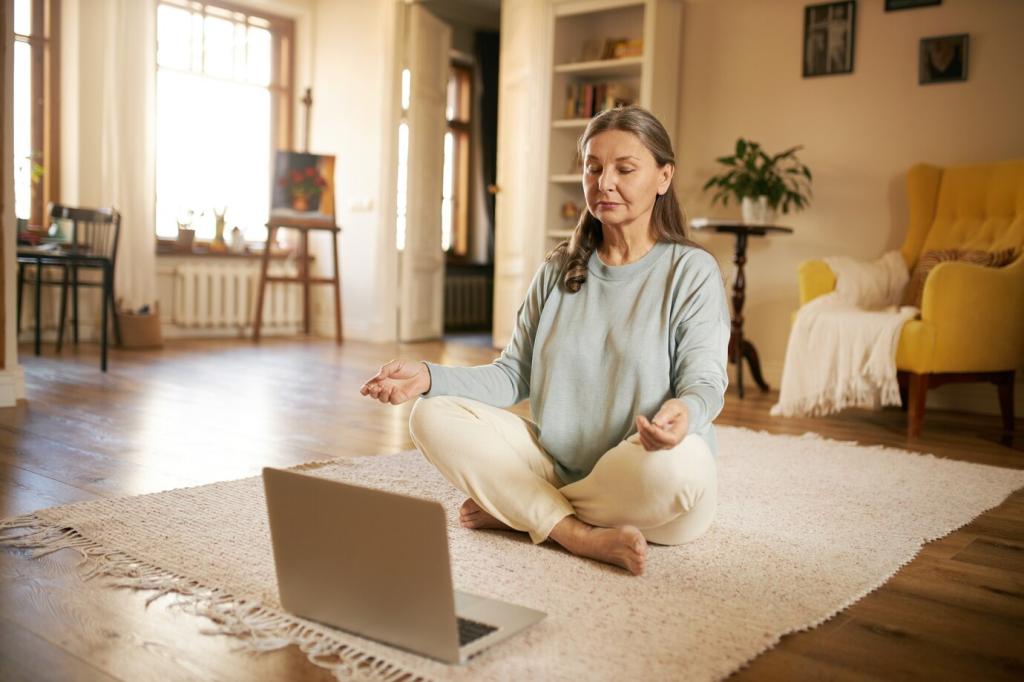

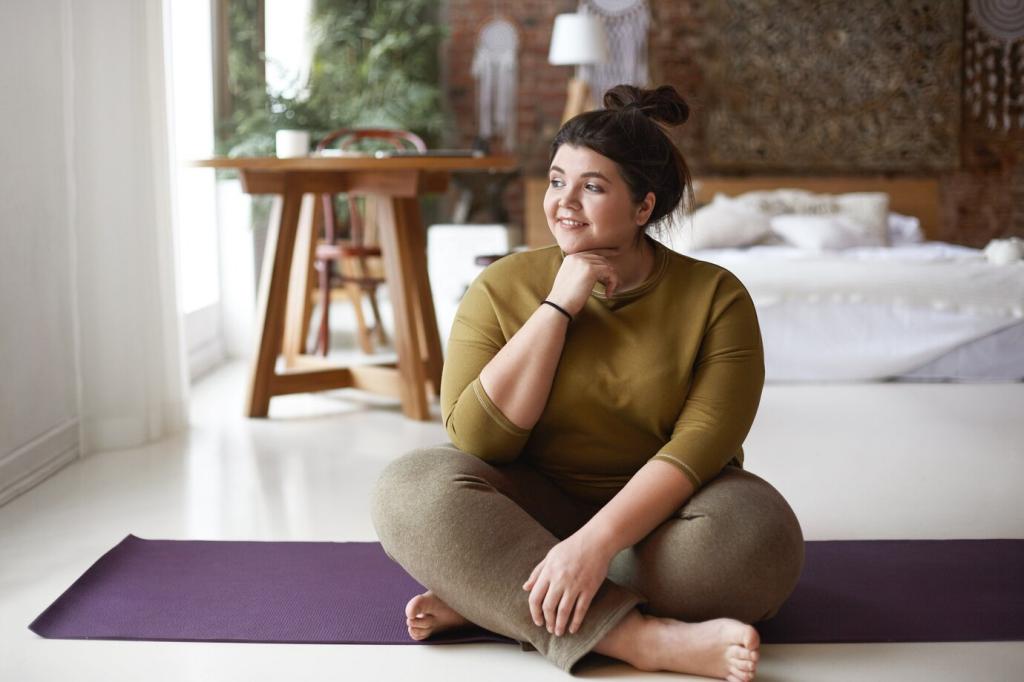
Placement and Flow: Choosing the Right Spot
Face a window for soft, natural focus, but avoid glare that strains eyes or heats the spot. Use sheer curtains to diffuse brightness and create a veil of privacy. If windows are limited, position your seat toward a blank wall to invite inward attention without distractions. Share a photo if you’re unsure.
Placement and Flow: Choosing the Right Spot
Define the zone with a low rug, folding screen, or plant cluster so energy slows as you enter. Avoid tight corners that feel cramped. Leave a small buffer behind you for psychological safety, then organize adjacent pathways to minimize interruptions. What boundary will you try first? Tell us below.
Quieting the Soundscape
Layer textiles—rugs, curtains, throws—to absorb noise. Add a white-noise source or soft water sound if your environment is busy. Felt panels or bookshelves along hard walls reduce echo. Try a simple clap test to hear the difference before and after. Comment with your favorite low-cost acoustic fix.
Scent as a Gentle Cue
Choose one lightweight scent—cedar, lavender, or Japanese hinoki—to signal practice without overpowering air quality. Rotate seasonally to keep the experience fresh. For shared households, consider unscented beeswax candles and a single drop of essential oil on a ceramic stone. What aroma aligns with your intention today?
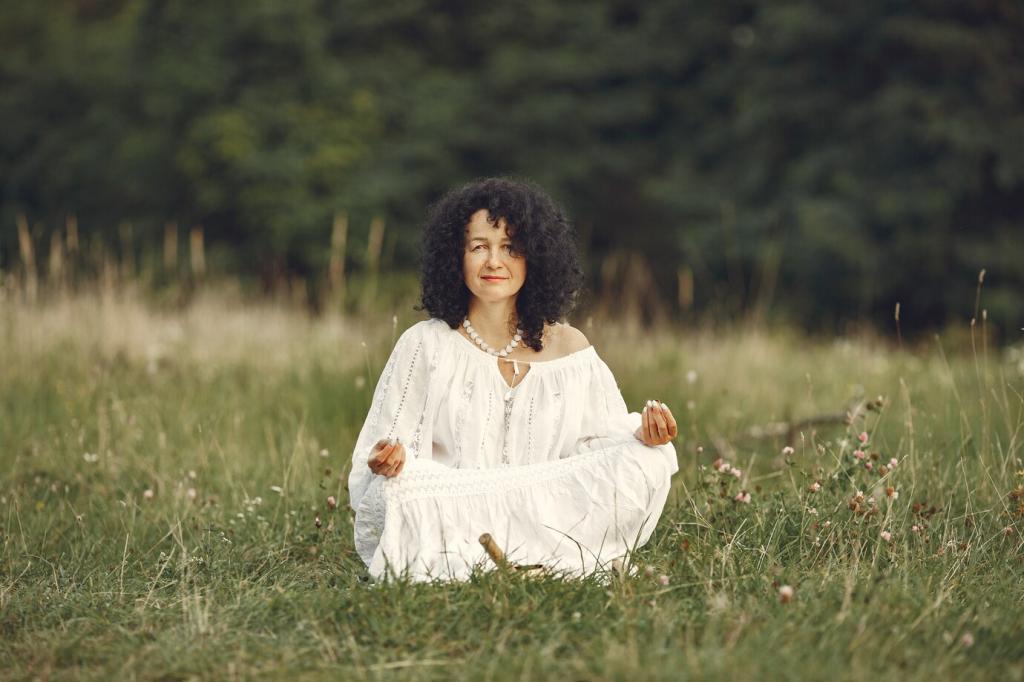
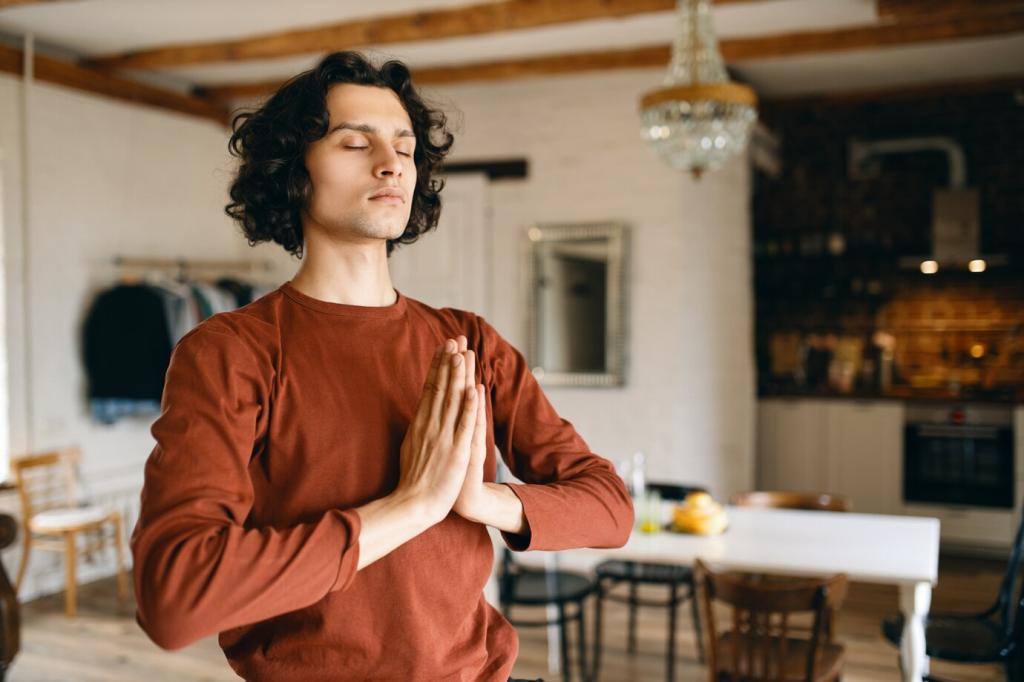
Color, Materials, and Light: Designing for Calm
Earth tones—moss, clay, sand—reduce visual noise and anchor attention. Add a single accent, like muted indigo, to guide focus without stimulation. Test swatches at different times of day; colors shift with light. Post your palette picks and tell us how they feel at sunrise versus evening.
Color, Materials, and Light: Designing for Calm
Select wood, cork, rattan, clay, and stone for tactile integrity. Avoid high-gloss finishes that reflect distractions. A simple wooden stool can double as altar and side table. If budget is tight, thrift solid pieces and refinish them. Share your best upcycling win to inspire sustainable sanctuaries.
Seating that Supports the Spine
Whether you choose a zafu, meditation bench, or chair, prioritize neutral spine alignment and relaxed shoulders. Elevate hips above knees to reduce strain. If seated on a chair, keep feet grounded on a firm surface. Describe your posture setup and any props that made longer sessions noticeably more comfortable.
Altar, Tray, and Discreet Storage
A small tray can hold a bell, mala, and journal, then tuck away after practice. Closed storage keeps the zone visually quiet between sessions. Limit visible objects to active ritual tools, rotating seasonally. Show us your minimalist altar and tell the story behind one meaningful item placed there.
Tech Boundaries that Protect Stillness
If you use an app, set do-not-disturb and flip the phone screen down or place it in a drawer. Consider an analog timer or singing bowl to start and end sits. Share your favorite non-digital cue so others can detach from screens while staying consistent with timing.
Shared Homes, Accessibility, and Safety
Offer multiple seating options—chair, bench, floor cushion—and adjustable supports. For sensitive knees or hips, add thicker mats and side supports. Make pathways clear and wide. If you’ve adapted your zone for mobility needs, share practical adjustments to help others design with dignity and ease.
Shared Homes, Accessibility, and Safety
Agree on quiet hours, visual signals, and respectful boundaries—like a closed curtain meaning “please not now.” Create a shared basket of earplugs and sleep masks for collective calm. What household agreement brought peace to your practice? Post it to help roommates and families co-create silence.
Outdoor and Seasonal Meditation Nooks
Choose a wind-sheltered spot and add a resilient mat with a washable cover. Shade the area for summer and add a wool throw for autumn. A single potted olive or bamboo provides soothing movement. Share your outdoor setup and how morning birdsong affects your practice momentum.
Outdoor and Seasonal Meditation Nooks
Store seasonal props in a waterproof bin and swap cushions as temperatures shift. Create weather rituals: rain equals breathwork, sun equals loving-kindness. Keep a compact broom for quick resets. What seasonal swap keeps your practice alive year-round? Comment to help others adapt gracefully.
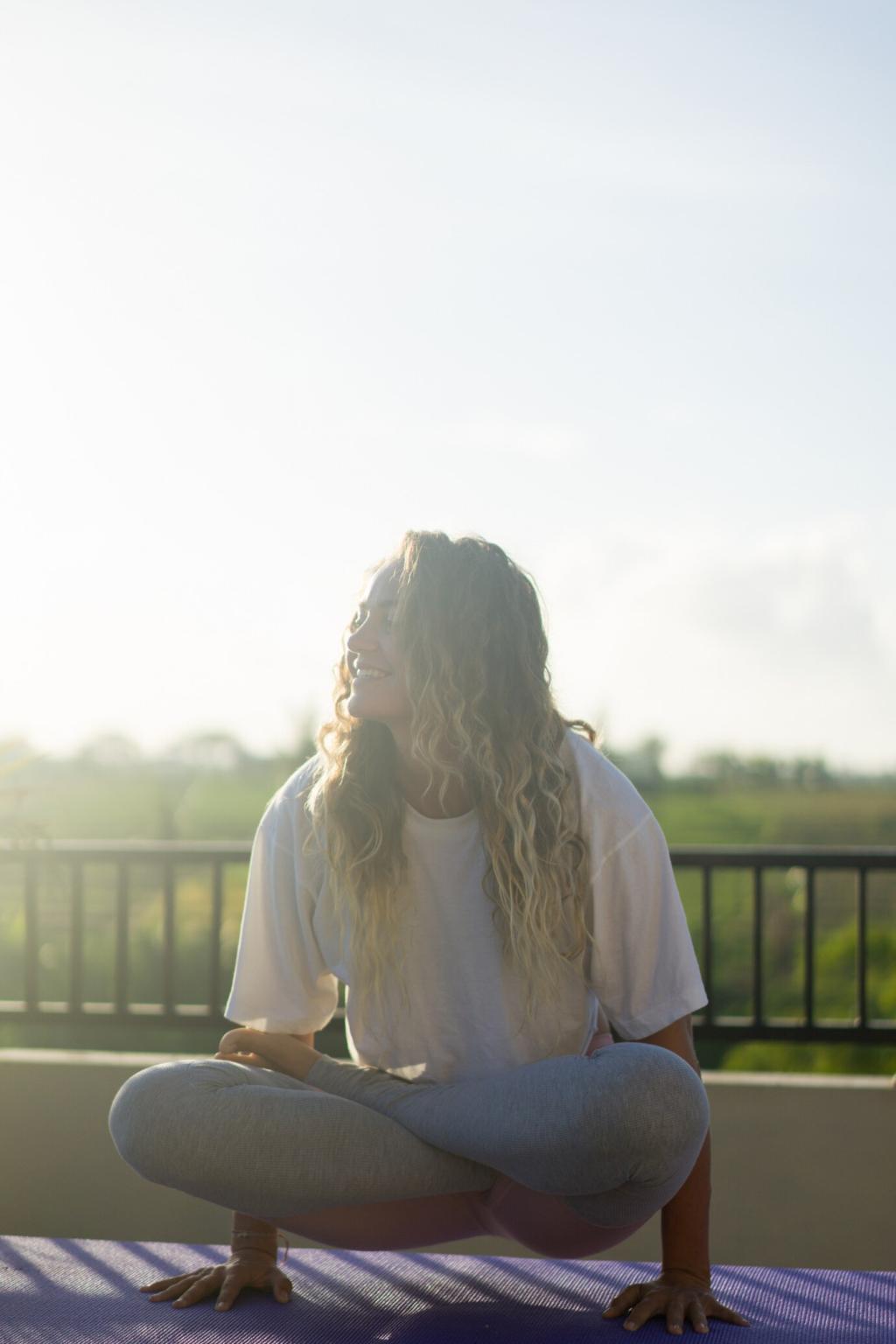
Sustaining the Sanctuary: Habits and Evolution
Daily Five-Minute Reset
After each sit, fold blankets, clear cups, and open a window for a short refresh. Set a tiny alarm labeled “reset the sanctuary.” Consistency keeps clutter from stealing calm. Tell us your favorite micro-habit that protects the vibe even on chaotic days.
Track Subtle Changes
Note how shifts in light, scent, or posture affect attention and mood. A monthly check-in—what helps, what distracts—prevents stagnation. Photograph the space seasonally to witness growth. Share a before-and-after image to motivate readers who are just starting their sanctuary journey.
Community, Accountability, and Support
Invite a friend to a quiet co-sit or join a local group. Post your weekly intention in the comments and check back Friday with a reflection. Subscribe for prompts, checklists, and reader spotlights. Together we build momentum that makes stillness a shared, sustainable rhythm.
